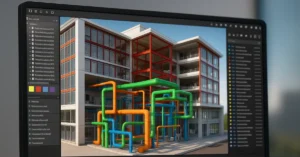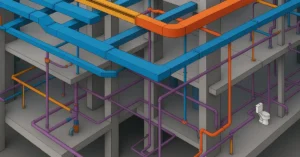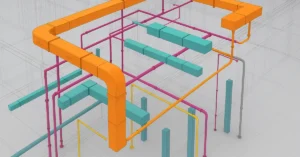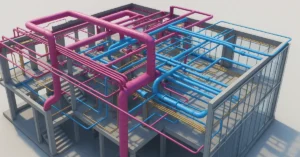Understand the Client Vision and Requirements: The Foundation of Villa Design

In the realm of architectural design, the process of creating a villa begins long before pen hits paper or lines are drawn on a blueprint. It starts with a crucial step: understanding the client’s vision and requirements. This initial phase sets the tone for the entire project, guiding architects towards crafting spaces that not only meet but exceed the expectations of those who will ultimately call the villa their home. Let’s delve deeper into why comprehending the client’s vision and requirements is the cornerstone of villa design.
Understanding the Client’s Vision:
Every individual or family seeking to build a villa has a unique vision in mind. It could be a reflection of their lifestyle, aspirations, cultural background, or simply their personal tastes and preferences. As architects, our task is to uncover and comprehend this vision in its entirety.
Communication is Key:
The first step in understanding the client’s vision is effective communication. Through open and transparent dialogue, architects can gain insights into the client’s desires, priorities, and non-negotiables for their dream villa. This may involve conducting interviews, hosting brainstorming sessions, or utilizing visual aids such as mood boards or reference images to elucidate concepts.
Listening with Empathy:
Beyond mere words, architects must listen with empathy to truly grasp the essence of the client’s vision. This entails understanding not only what they say but also what they imply and feel. By empathizing with their perspective, architects can forge a deeper connection and translate their aspirations into tangible design elements.
Uncovering Hidden Desires:
In many cases, clients may possess latent desires or aspirations that they may not articulate explicitly. It is the architect’s responsibility to unearth these hidden gems through attentive observation and probing questions. By delving beneath the surface, architects can uncover valuable insights that shape the villa design in profound ways.
Collaborative Ideation:
Rather than imposing preconceived notions or design agendas, architects should approach the process as a collaborative endeavor. By inviting clients to actively participate in the ideation process, architects can co-create solutions that resonate with their vision while leveraging the expertise and creativity of both parties.
Documenting Vision Statements:
Once the client’s vision has been elucidated, it is essential to document it in a clear and concise manner. This may take the form of a vision statement or design brief that encapsulates the core aspirations, values, and aesthetic preferences driving the villa project. Documenting the vision provides a reference point throughout the design process, ensuring alignment and accountability.
Understanding the Client’s Requirements:
In addition to comprehending the client’s vision, architects must also delineate their practical requirements and constraints. These may encompass spatial needs, functional specifications, budgetary constraints, regulatory considerations, and sustainability objectives.
Space Programming:
Space programming involves analyzing the client’s lifestyle and activities to determine the spatial requirements of the villa. This entails identifying the number and type of rooms, their size and configuration, as well as their interrelationships. Whether it’s a spacious kitchen for culinary enthusiasts, a cozy reading nook for bookworms, or a dedicated home office for remote workers, each space should be tailored to the client’s lifestyle.
Functional Analysis:
Beyond spatial considerations, architects must conduct a thorough functional analysis to ensure that the villa not only meets but enhances the client’s daily routines and activities. This may involve ergonomic assessments, circulation studies, and workflow analyses to optimize the usability and efficiency of the villa layout. By understanding how occupants will interact with the space, architects can design intuitive and user-centric environments.
Budgetary Constraints:
Budget considerations play a pivotal role in shaping the design direction and scope of the villa project. Architects must work closely with clients to establish realistic budgetary parameters and prioritize design elements accordingly. This may involve balancing high-impact features with cost-effective solutions, exploring alternative materials or construction methods, and providing value-engineering options to optimize the project’s cost-performance ratio.
Regulatory Compliance:
Navigating the labyrinth of building codes, zoning regulations, and permitting requirements is an integral aspect of villa design. Architects must stay abreast of local regulations and ensure that the design complies with all applicable codes and standards. This may involve coordinating with regulatory authorities, engaging in zoning analysis, and obtaining necessary permits and approvals to proceed with the project legally and seamlessly.
Sustainability Objectives:
In an era of increasing environmental consciousness, sustainability has become a paramount consideration in villa design. Architects must integrate sustainable design principles and green building strategies to minimize the ecological footprint of the villa while maximizing energy efficiency and occupant comfort. This may involve incorporating passive design strategies, specifying eco-friendly materials, and integrating renewable energy systems to create a harmonious synergy between the built environment and nature.
Conclusion:
Understanding the client’s vision and requirements is not merely a preliminary step in villa design but rather the bedrock upon which the entire project is built. By delving deep into the client’s aspirations, empathizing with their perspective, and translating their desires into tangible design solutions, architects can elevate their craft and create villas that resonate with the essence of those who inhabit them.
From communicating effectively and listening with empathy to uncovering hidden desires and delineating practical requirements, architects play a pivotal role in bringing the client’s dream villa to fruition. In the next installment of our Ultimate Guide to Designing a Villa as an Architect series, we will explore the pivotal role of site selection and analysis in shaping the built environment. Stay tuned as we continue our journey to elevate the craft of villa design, one cornerstone at a time.
Click here to gain access to the full-villa course
If you’re interested in learning more about architecture firms in Europe, check out this comprehensive list of the top 50 firms compiled by Archgyan. From innovative startups to long-established industry leaders, this list has it all. Take a look and discover some of the most inspiring and influential architecture firms in Europe today.
If you’re interested in architecture and want to learn more about this amazing field, subscribe to our podcast on youtube
For more SketchUp tutorials, head to https://www.sketchupguru.com










